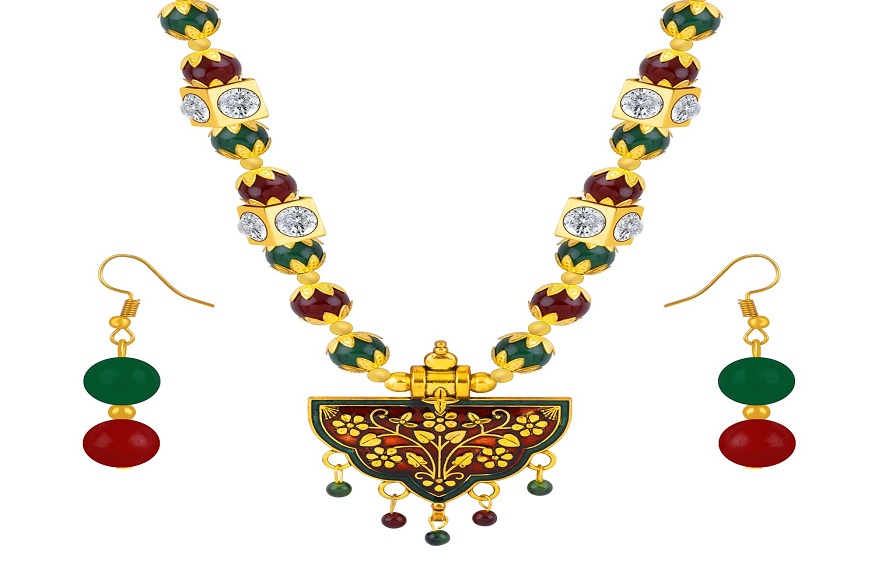The workshops of jewelers and jewelers contain many risks, physical, thermal and chemical. In jewelry stores, the main risks are psychological damage linked to predatory violence (burglaries, physical attacks, etc.) associated with products of high market value.
The workshops of jewelers and jewelers harbor numerous physical, thermal and chemical risks: the manufacture or repair of jewelery consists of mechanical, chemical and electrolytic operations intended to modify their appearance or their properties: melting of metals, cutting and gemstone insertion, soldering, crimping and polishing, electroplating, pickling and pickling…
Jewelery and jewelery use sharp tools causing injuries, noisy processes (stamping, stamping), requires precise and repetitive gestures with strong visual requirements and handles many toxic, allergenic, corrosive and carcinogenic chemicals: skin contact and above all, the exposure of workers to harmful metal dust and to the fumes of solvents and vapors from acid or basic baths in the ambient air constitute high health risks for jewellers.
Moreover, the very nature of the methods of melting molten metal obviously expose to a risk of thermal burns by projection of metal or exposure to infrared rays.
In jewelry stores, the main risks are psychological damage linked to predatory violence (burglaries, physical attacks, etc.) associated with products of high market value.
Collective and individual prevention measures are therefore essential to significantly reduce the frequency and severity of accidents at work among jewelers:
– premises with good air extraction and a good suction system,
– ergonomic workstations and adequate lighting,
– limitation of the use of the most harmful products and substitution by others which are harmful less,
– compliance with the rules for the storage of chemical products,
– wearing protective clothing, shoes and glasses, gloves suitable for the task carried out and the product concerned, a respiratory protection mask in the event of an emergency or for work exceptional short-term hearing protection.
– installation of access control to the premises, entry/exit airlocks, video surveillance systems, alarm and alert systems.
The information of exposed jewelers on the risks of chemical products used in their profession, their training in adequate preventive measures, reinforced medical monitoring and traceability of their professional exposure complete the work safety system.
The main professional risks of jewelers and jewelers
The manufacture of a jewel brings together several stages ranging from the work of the lapidary who cuts the precious stones (diamonds or other gems, rubies, sapphires, emeralds, etc.), to that carried out in the workshops of the jeweler and the jeweler where the casting of alloys (gold, silver, etc.), soldering, crimping, polishing, electroplating for gilding or silvering,
Physical risks in jewelery shops
Careful work with awkward postures, repetitive gestures, visual constraints, the use of vibrating and cutting machines… exposes jewelers to numerous injuries and traumas.
The risks of musculoskeletal and angioneurotic disorders
Precise, fast and monotonous work on the workbench can generate musculoskeletal disorders due to repetitive gestures of cutting, polishing, crimping, stripping, etc. associated with a leaning position (kyphotic attitude) to ensure close vision and the arms outstretched, elbows raised, leaning on the table: it follows the frequent appearance of dorso-lumbago and neck pain, tendinopathies of the upper limbs, and carpal tunnel syndromes.
In addition, the vibrations of the portable machines used intensively by the lapidary or the polisher lead to osteoarticular risks of the upper limbs which first concern tendonitis of the elbow (epicondylitis and epitrochleitis), of the wrists, then tendinopathies of the shoulder. The temporary vibratory anesthesia which temporarily reduces the painful sensation, often leads to continuing the work by aggravating the pathology. The risks of vibration neuropathies are manifested by the loss of manual dexterity, the tactile reduction of the fingers, tingling in the intermittent or persistent hands.
The risk of injury
Many prickly and sharp-edged manual tools (needle files, shears, etc.) and machines are used for laminating, stretching, cutting, stamping, drilling, polishing, etc., which cause significant risks of injury, particularly to hands and fingers. cuts or crushing with possible inclusion of metal fragments and in the eyes by projection.
In particular the rolling mill with its moving parts, the electric drill for drilling stones, electric lathe polishing with brushes or felt or leather wheels rotating at high speed, stretching benches, stamping machines are sources of danger.




